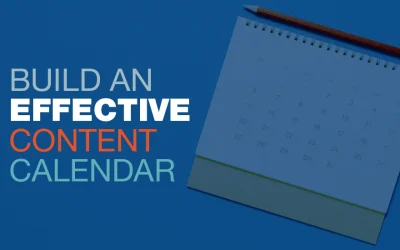A Practical Market Research Guide for B2B Technology Companies
Before you attempt to identify buyer personas, you should conduct market research on your target audience. Here is a comprehensive guide on how to perform market research.
Importance of Market Research for B2B Technology Companies
Understanding your target audience is crucial in marketing. it allows you to determine your value proposition and identify specific clients who require your services. To grow your company effectively, conducting market research on your audience is essential. This research helps to gain insights into their needs, values, personalities, and purchasing behaviors.
Armed with this valuable data, you can position your products and services to differentiate them in the market and craft a compelling message that motivates the right individuals to take action.
Challenges of Conducting Market Research on a Tight Budget
Every company, regardless of size, must stick to a marketing budget. We know there are challenges to performing in-depth market research effectively, such as:
- Limited resources and time constraints
- Limited sample sizes and geographic reach
- Limited research methods
- Limited access to specialized tools
Despite these challenges, there are still effective market research methods and tools you can use that won’t break the bank.
Defining Your Business Goals and Research Objectives
Before diving into methods and tools, producing a survey, or calling up your customers to interview them, work on clearly defining your business goals first and outline what you hope to achieve with your market research.
For example, is your company launching a new product or service, expanding into a new market, or working to improve existing customer satisfaction? Once you know your business goals, you can develop specific research goals. For this guide, we will focus on market research methods to identify and target the right audience for your business.
Identifying Specific Research Goals and Questions
You need to discover your target audience’s needs and wants. Once you understand your target market, you can start to develop research questions that are relevant to them. Check out our guide on identifying buyer personas to help figure out how to craft a buyer persona. Here are some additional guidelines to follow.
Do Your Research
Before you start developing questions, it’s important to do your research and understand the current state of your market. What are the latest trends? What are your competitors doing? Once you have a good understanding of your market, you can develop research questions that will help you gain insights.
Be Specific
When developing research questions, be as specific as possible. Avoid asking broad, open-ended questions at first. Instead, focus on questions that will help you answer your business goals.
Focus on Measurables
Your research questions should be measurable. This means that you should be able to collect and analyze data that will help you answer your questions.
Be Relevant
Your research questions should also be relevant to your business goals and target market. Avoid asking questions that are not relevant to your research.
Be Feasible
Your research questions should be feasible to answer. This means that you should have the resources and time to collect the data you need. A giant survey for your whole industry sounds nice but isn’t very practical if resources are tight.
Collecting Data
At this point, you should have a clear understanding of your target audience and your current market conditions. Now you can begin exploring resources and data to answer your research questions. Here is a list of places and methods you can use to gather third-party and proprietary data.
Explore Publicly Available Data and Reports
There are many third-party resources you can use to gather data for free, such as:
- Industry Associations and Trade Publication
- Government Resources and Databases
- Social Media and Online Communities
The list of Industry Associations will vary depending on your specific audience, but for retail, supply chain, and B2B tech companies, here are a few places to look first:
Government organizations also provide a plethora of information for free. Try checking these resources:
- The Census Bureau
- American Time Use Survey
- Bureau of Labor Statistics
- Social Explorer Profiles
- Claritas
- ONET
- Google Trends
- Statista
You can also leverage groups on social media and various forums, like Reddit and Quora, to see what questions people are asking related to your industry.
In-House Surveys and Interviews
Many marketers like to collect their first-party data. First-party data can be a bit more work to obtain, but you can tailor the research to answer your specific questions.
Alexandre Bocquet, Founder & CEO of Betterly, strongly supports first-party data collection for his business. “Creating short surveys, collecting data through in-person and online events, offering content-sharing opportunities to encourage information exchanges, and conducting online polls, are all effective ways to learn the pain points and needs of consumers within your market space,” commented Bocqut. “By creating a comprehensive first-party data collection strategy, you can conduct effective and actionable marketing research with little strain on resources.”
Bridget Reed, the co-founder of The Word Counter, has found that social media is a great asset for first-party data collection. “By utilizing social media platforms such as Twitter, Instagram, and Facebook, companies can conduct polls, surveys, and collect data on their target audience,” says Reed. “This strategy works because it allows companies to reach a large audience for little cost and provides real-time data that can be analyzed immediately to make informed business decisions. Additionally, it can create engagement with potential customers and build brand awareness. However, it’s important to ensure the data collected is reliable and unbiased.”
Social media is a great way to distribute and collect polls, but don’t forget about email! Your email list is full of subscribers who are already aware of your business and have made the choice to subscribe to your campaigns or newsletter. Create email campaigns to reach them with your custom surveys as well. Just make sure your list is segmented so you can send your surveys to the correct groups.
You can also interview existing customers and industry experts in person to gain valuable feedback as well.
Customer Feedback and Reviews
If you already have a process to collect customer feedback and reviews, that is another great place to find insights. Newer companies likely won’t have this in place at first, but you should look for ways to get feedback from your clients early and often.
Doing so will help you find ways to improve your service by gaining a greater understanding of what your audience needs help with, what they like, and what they would like you to change about your product, service, or solution.
Industry Events
While they aren’t always inexpensive, industry events offer a chance to glean insights from prospects in your niche. Emily Onkey, Co-Founder and Chief Marketing Officer of Aplós, favors in-person events for first-party data collection.
Onkey shared, “Local events, trade shows, or industry-specific meetups allow you to interact directly with your target audience to gather valuable feedback. Engage in conversations, ask open-ended questions, and listen attentively to their experiences, needs, and pain points. This firsthand information can provide you with valuable insights into your market. As a bonus, you can also observe your competitors at the events. Check out their booth presentations to analyze their products and services, as well as their marketing strategies. Observe how they interact with potential customers. Making the time to do so can give you valuable insights into what works well and what can be improved in your business.”
Competitors and Industry Trends
A less obvious resource for data collection is your competitors. You can use different tools online, or just visit their websites yourself, to get an idea of their messaging. Check out any news resources that cover your industry as well to get a pulse of what’s popular and what some of the general concerns are.
Interpreting and Applying Research Findings
Depending on what methods of collecting data you used, analyzing the results will be different. Quizzes, polls, and surveys are easier to get results from because they are generally more quantifiable. In-person conversations, interviews, and open-ended questions may take a bit more time to process, but there will still be many nuggets from those sources.
The best way to start is to consolidate all your research into one place. A tool like Excel or Sheets will be very helpful to build tables, charts, graphs, etc. For interview data, you will need to spend time reading through the responses to discover common themes among recipients.
Once you have consolidated and analyzed the data, you should be able to apply the findings to your initial questions. For example, maybe your research question was “What are the pain points of my audience?” After analyzing the data, you found that customer support, time-saving, and ease of use were most important to your prospects. Using that info, you can then craft messaging on your website, blogs, emails, and ads that address these areas.
As always, measure, test, and refine your marketing strategies and messaging regularly to ensure you are being effective.





0 Comments